- europages
- >
- COMPANIES - SUPPLIERS - SERVICE PROVIDERS
- >
- recycled solvents
Results for
Recycled solvents - Import export
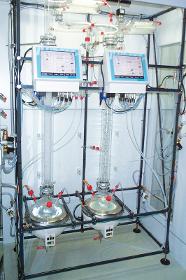
ILUDEST DESTILLATIONSANLAGEN GMBH
Germany
The instrument has a capacity of 6 litres of solvent mixture with a throughput of up to 1 l / hr (e.g. when recovering Xylene). A microcomputer controller holds up to 100 programs as well as monitoring the distillation process for normal and safe operation. Variable reflux ratios and equilibrium times are possible so that the operator has maximum flexibility to design a program for optimal efficiency. Other capacities are available upon request.
Request for a quote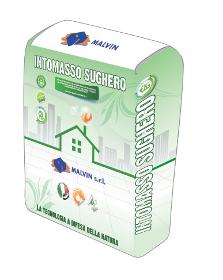
MALVIN SRL
Italy
It is an eco-friendly bio-mortar, fibrated with a special composition of fibres tested for the specific use, based on natural materials as cork granules and natural hydraulic lime compliant with EN 459-1 for insulating base coat screeds, soundproofing and dehumidifying, inside and outside with an high and constant quality level, produced with an automated system, to apply with a plaster sprayer, screed pump or by hand. The natural hydraulic lime ensures an hydraulic hardening very slow and constant that allows to obtain screeds with an high durability and breathability. Form no vapor barriers and contains no solvents. Recyclable as inter at the end of its life.
Request for a quote
DE SMET ENGINEERS & CONTRACTORS
Belgium
De Smet Engineers & Contractors has been involved in all steps of the production of vegetable oils from oilseeds crushing for the construction of Edible Oils Plants; in this article you will find a more detailed understanding about the process of vegetable oil extraction: First step: Preparation of the oil containing material prior to solvent extraction Cleaning and Drying The plant feedstock must be cleaned so that foreign matters are removed. This applies particularly to sand/silicate and iron which may damage the preparation plant equipment. For some seeds or for some processes the incoming material moisture must be controlled and adjusted for better efficiency of subsequent operations. Mechanical preparation Most of raw materials needs to broken to reduce the particle size to ensure proper cooking and flaking. They are then heated in cooking / conditioning equipment and their moisture further controlled in addition to be softened before the next mechanical operations. After cooking, heated grits are flaked so that the oil cells are broken and the oil more readily available for further solvent extraction or mechanical pressing. Pressing Oilseeds containing above 20 to 25% (rapeseed, sunflower seeds, cottonseeds...) are generally pressed mechanically in order to extract most or part of the oil available in the feedstock. This operation is done through full pressing for maximum oil recovery leaving up to 5 to 10% in the final cake which is marketed as such or through a low pressure pre-pressing operation producing a cake with higher residual oil content which is then recovered in the solvent extraction plant. Dehulling Oil extraction plants produce a solid finished product in addition to the extracted oil; this product (cake or meal) is normally used as an important component for animal feed recipes. Depending on the meal destination, its protein content often needs to be increased and its fibre content minimized. Such characteristics are generally achieved through decortication or dehulling operations that separate the outer part of the feedstock before extracting the oil. Second step: Solvent extraction of the material suitably prepared Extraction In the solvent extractor, solids (Flakes from the flaking machines or cakes from the pre-presses) are conveyed through the equipment while a mixture of hexane and oil (miscella) is sprayed counter-current. The extractor produces therefore deoiled solids containing solvent and miscella. Desolventization Deoiled solids coming out of the extractor are conveyed to a dedicated equipment that completely removes the remaining solvent while preserving the meal quality: the desolventizer. This apparatus is usually combined with additional sections for drying and cooling the meal to the required storage and market parameters. Miscella distillation Solvent contained in the miscella is completely removed under vacuum and optimum temperature for preserving oil quality. The solvent from the distillation as well as the one removed at meal desolventization stage are then recycled to the extractor. Solvent recovery Since the air entering the process together with material fed to the extractor is laden with solvent when it is removed from the plant it first pass through a specially designed absorption column to limit emission to an acceptable level. Meal treatment The extracted meal is often subject for further treatment, including grinding to obtain the required granulometry or pelletizing to reduce its volume during transport.
Request for a quote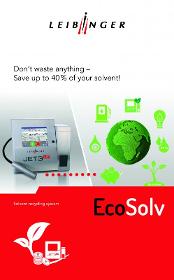
PAUL LEIBINGER GMBH & CO. KG
Germany
The EcoSolv solvent recycling system ensures LEIBINGER inkjet printers consume the smallest possible amount of solvent. A JET3up or JET2neo series printer with EcoSolv consumes up to 50% less solvent. EcoSolv recovers the evaporated solvent from the printer exhaust air through condensation and directs it back into the supply tank. Solvent recovery allows you to save cash and protect the environment!
Request for a quote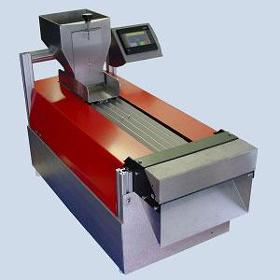
ELMOR
Switzerland
The elmor 650 Multi-Channel Counter is primarily used as a fast seed counter, but also as a counter for any small parts, such as: Vegetable seeds Seeds of ornamental plants Cereals, Maize, Rice, Canola Pills, Pharmaceuticals small mechanical parts All these products have in common is that they are either irregularly shaped or very small and that they are difficult to handle manually. Dosing these parts with scales is often flawed or impossible. The 650 Multi-Channel Counter is specialized for fast counting and dosing of medium to large quantities. For counting and dosing of small quantities, our seed counter elmor C1 can be used. With the 650 Multi-Channel Counter, the product being counted is fed along different channels in parallel, separated and counted. The number of counting channels may be freely selected between 5 and 25. The counting channels are supplied via a supply hopper with a capacity of several litres. The counting speed is determined by the number of channels and the size and shape of the products. A multichannel counter with 25 channels can count more than 1 Million parts of 2mm diameter per hour. Like all machines from elmor, also the multichannel counters can be manufactured in different variants, in order to be combined optimally with other devices. Picture: 650 Multi-Channel Counter with 25 channels Technical data Count parts from 0.5 to 20 mm in diameter Modes of operation: Preset counter, Totaliser The conveyor speed is reduced shortly before reaching the desired quantity to achieve a high dosing accuracy. Counting error: 1/1000 or better The elmor 650 Multichannel Counter is controlled by a PLC, thus the combination with subsequent packing machines, fillers or printers is easily possible elmor Green Design Our label for: high energy efficiency longevity no standby power loss most components may be recycled production without solvents, ROHS conformity
Request for a quoteDo you sell or make similar products?
Sign up to europages and have your products listed
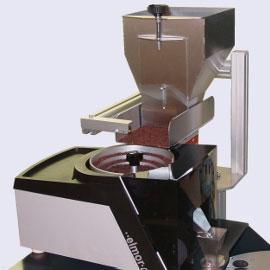
ELMOR
Switzerland
The feeding conveyor elmor 610 serves to refill the counting machines elmor C1, C3 or CX continuously and unattended. The feeding conveyor elmor 610 consists of a hopper, a feeding unit and a level sensor. Once the filling level in the conveyor bowl of the counting machine elmor C1, C3 or CX falls below a minimum value, it is automatically refilled through the feeding conveyor elmor 610. For small and light parts such as seeds, a linear vibratory conveying device is used. The hopper has 4 liters of storage volume. For large or heavy items refilling is done via a belt conveyor. The storage volume in this case is 10 liters or more. With the feeding conveyor elmor 610 a long operating autonomy is achieved, especially when the couning machine runs in combination with a filling or packaging machine. Technical data Suited for parts larger than 2 mm in diameter Type of conveyor: linear vibratory conveyor or belt conveyor Storage volume: 4 litres (vibratory conveyor) or 10 litres (belt conveyor) Level sensor: a precise sensor switches the conveyor on and off depending on the level to be regulated elmor Green Design Our label for: high energy efficiency longevity no standby power loss most components may be recycled production without solvents, ROHS conformity
Request for a quote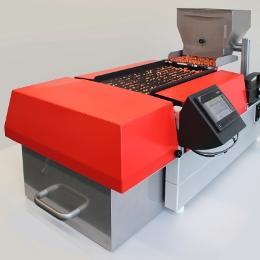
ELMOR
Switzerland
Equipment with a modular design for sorting and counting differently colored small articles within the mm range. The elmor colour sorter is inteded for laboratory use with a sorting capacity of 10’000 to 20’000 parts per hour for each channel, which corresponds to about 1 to 2 kg per hour per channel. The parts which have to be sorted are transported and singularised in a linear multichannel conveyor stage. The individual fractions are distributed corresponding to their colour into 2 or more containers. On request the elmor colour sorter can also count the fractions, so that mixtures of differently coloured particles can be quantitatively analysed. In order to get the requested sorting capacity, the devices can be equipped with 1 to 25 parallel channels. If the parts do not need to be counted, the number of channels is not limited. Thus the output per hour and the necessary investments can be selected individually upon the given conditions. The elmor colour sorted is intended for laboratory use for clearly defined sorting tasks; the throughput in the range of kg per hour is too low for the industrial sorting of rice, grain and other cereals, where tons per hour are requested. Technical data Modular sorter with parallel sorting channels The product to be sorted is transported and singularised on a linear conveying channel Each channel has an own colour detector, which is selected corresponding to the requested sorting task Additionally the detected parts per channel can be counted The number of parallel channels is theoretically illimited. If the fractions are counted, the maximum number of channels is 25. Typical sorting speed per channel: 2 parts per second parts with 2mm diameter or larger can be processed. elmor Green Design Our label for: high energy efficiency longevity no standby power loss most components may be recycled production without solvents, ROHS conformity
Request for a quote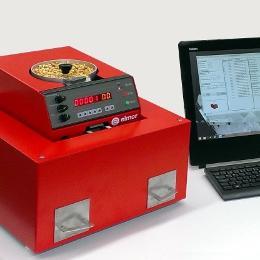
ELMOR
Switzerland
Single grain seed weight analyser and seed weight sorter. The elmor SWS opens new possibilities for breeding and quality control of grain, corn, oilseeds, legumes and vegetables. Moreover a variety of applications arise in environmental monitoring. Weight distributions of selected samples (kernels of individual ears, selected generations of breeding programs etc.) are determined in statistically relevant quantities, automatically and unattended. In addition, due to the possibility of sorting, a targeted selection according to the individual kernel weight (seed weight selection / seed mass selection) can be realized. The Seed Weight Sorter (SWS) can be used as seed weight analyser for large amounts of individual kernels. It can run unattended and with high accuracy. In addition, the tested parts can be sorted. As sorting criterion, a weight limit (above / below the limit) or a window value (inside / outside the window) can be selected. The seed weight sorter consists of an C1 counting device that runs in single grain dosing mode. The weight of each individual grain is measured using a high speed high accuracy weigh module for industrial environmental conditions from METTLER TOLEDO. This precision balance has a readability of 10 Milligram, 1 Milligram or 100 Micrograms. The rugged industry scale is largely insensitive to dust, making it suitable for tough continuous operation even in harsh environment. A pneumatic sorting cell transfers the weighted parts according to the measured weight value into one of two bins. The entire process and the storage of all weight values are controlled by a Windows-based PC. The file with all weight data can be exported via XML protocol for further processing with relevant software. Technical data For parts ranging from 2 mm to 10 mm diameter Available resolutions of the scale: 10 mg, 1 mg, 0.1 mg Modes of operation: Serial weight protocolling without sorting Sorting with one predetermined weight limit Sorting according to the moving average Sorting with two limits: inside or outside of a defined range Obtained data when parts are sorted with one limit: Number of weighted particles Weight total Average weight, all particles Particles in the right bin Weight right Average right Percentage right Particles left Weight left Average weight left % left 1000 Grain Weight total 1000 Grain Weight right Time consumption per operation: typically 2 to 4 seconds, depending on the resolution of the scale Operational autonomy The sorter can run unspervised for many hours. It stops when one of the following conditions is true: when a preselected number of parts is weighted when a preselected number is sorted into the right bin when a preselected total weight is processed when a preselected weight is sorted into the right bin when one of the sorting bins is full. System requirements for the control PC: Operating system Windows XP, 7 or 8 .NET Framework 4.5 or higher 2 RS232 or USB Ports Dimensions / weight W x D x H: 390 x 470 x 460mm, 25kg Media Power supply: 230 V, 50 Hz or 120 V, 60 Hz. Other voltages / frequencies on request Pressurised air: dry and clean air, 0.6 MPa (6 bar) elmor Green Design Our label for: high energy efficiency longevity no standby power loss most components may be recycled production without solvents, ROHS conformity
Request for a quote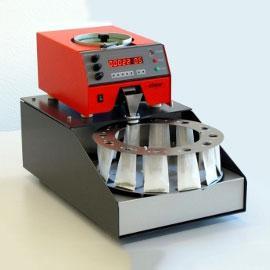
ELMOR
Switzerland
The elmor 780 carousel filler can be combined with all of our counting devices; particularly with the seed counters C1 and elmor C3 or with the multichannel seed counters elmor 650. The carousel filler allows semi automatic, to a large extent unsupervised filling of vials, tubes, small containers as well as bags from paper, glassine or composite material. The carousel tray can easily be removed and reinserted and the control circuitry of the equipment recognizes automatically if a tray has empty positions; these positions are skipped so that no seeds get lost. The carousel filling devices are individually designed depending upon the requirements of the customers. The type and size of the containers as well as the number of positions per tray can be selected within wide range. Examples Top: C1 seed counter with a carousel filler built for 12 glassine bags. Middle: C1 seed counter with a carousel filler built for 16 glass dishes used for sample preparation in a seed quality test lab. Bottom: Carousel insert for 25 Eppendorf tubes (trademark of Eppendorf) Technical description The Carousel filling device consists of a base unit with control and drive and the removable carousel insert made of stainless steel. The containers are loaded or unloaded using the taken-out carousel. With two or more carousel inserts, a high filling throughput can be achieved. The number of positions depends upon the width of the bags, respectively, the diameter of the container. The maximum number of filling positions amounts to 15 bags or 25 containers. A special version of the basic device also allows the processing of two different position numbers in the ratio 2:1, for example, 24 tubes or 12 bags. In the base unit a maintenance-free drive is installed which needs no adjustments. This results in a long service life even in rough and dusty environments. The carousel can be equipped with any type of containers. Examples are: Glassine bags, envelopes, vials, small containers or tubes with only a few mm in diameter. Before each filling operation, it is checked whether a container is present or not at the current position. Empy positions are skipped to avoid a loss of parts to be filled. Modes of operation Automatic: all positions of the carousel are filled, then the device stpos and waits until it is restarted. Permanent: the positions will be filled permanently. The filled containers can manually be replaced. Dimensions: 360 x 600 mm, the height depends of the container height. Weight about 20kg elmor Green Design Our label for: high energy efficiency longevity no standby power loss most components may be recycled production without solvents, ROHS conformity
Request for a quote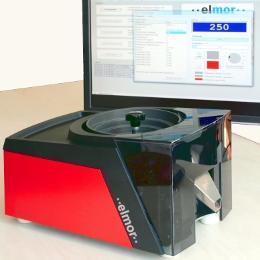
ELMOR
Switzerland
The PC controlled, high sensitive elmor C3 Seed counter is preferably used in scientific counting tasks in laboratories Universities, research and breeding projects or in seed quality control etc. Parts that can be processed with the C3 seed counter are, for example: Dust fine plant seeds such as Arabidopsis thaliana or Begonia semperflorens Vegetable seeds, grains or seeds of ornamental plants Insects, pupae and eggs Small mechanical parts Pharmaceuticals Semiconductor chips etc. The C3 Counter is controlled solely via PC. Thus new solutions for the ever growing demands of the customers are possible. All settings and the results of all operations are logged and saved . This is an essential prerequisite for quality control and traceability of test results. The parts that can be counted with the C3 seed counter can be extremely small and irregularly shaped. Thus they are very difficult to handle manually. Dosing these parts with scales is often flawed or impossible. Therefore the use of the of C3 opens new options, since e.g. smallest parts in the sub-milligram range can be dosed faster and more accurately by counting than weighing the pieces. With additional software modules also further evaluations can be performed. These are currently: direct 1000 grain weight determination and the grain size analysis. Technical data Counts Parts from 0.1 to 18mm in diameter For spheres of 2mm diameter: Counting rate: 50’000 parts per hour Typical counting error: less than 1/1000 Runs under Windows XP/7/8.1 Free Serial Port (RS232) or USB needed Software included Totalizer Preset Counter Additional software available: Direct determination of the 1000 Kernel Weight Analysis of the size of the counted particles: Particle Size Analysis Conveyor bowls The parts to be counted are transported in a vibrating conveyor and are singularised by means of a sorting element. Both the conveyor bowl as well as the sorting element can be selected among different variants , depending on the properties of the product to be counted. A) Standard conveyor bowl made of anodised Aluminium with universal – sorting element FS0. FS0 is manually adjustable for all part sizes from 0.1 to 18 mm in diameter. B) Special sorting elements instead of FS0: FS1, manually adjustable, optimised for cereals, rice, paddy and products of similar shape and size FS2: manually adjustable, optimised for corn, soybeans, peas, beans and products with similar shape and size FS3: fine-drive adjustable in height and width, for very flat seeds or flat mechanical parts with the following dimensions: width: 0.5 to 10 mm, height: 0.5 – 8 mm, maximum length: 20 mm C) Special conveyor bowl with additional lateral opening for mechanically eliminating of accompanying substances, suitable for corn, cereals, soybean, paddy, etc. The height of this opening can be adjusted from 0 to 5 mm and allows unwanted accompanying substances laterally be sorted out. Not suitable for parts smaller than 1 mm in diameter. Can be used with sorting elements FS0, FS1, FS2, or FS3 combined. D) To meet the needs of various industries, the conveyor bowls can be made of other materials . These bowls are for example extremely impact resistant or correspond to the rules of the FDA, etc. Such trays can be made from various basic materials like Titanium, PEEK, Polyamide and others. E) The standard aluminum bowls can be treated or coated in order to satisfy specific requirements. With increased mechanical stress or when in contact with food, the surface can be hard anodized. A hard coating of nickel has a high surface hardness and is FDA approved, Polyurethane (PU) coating permits rapid transport of heavy mechanical parts and prevents noise and wear. Again, FDA approved materials can be used. F) Feeder Bowl with vertical outlet: Short cycle times are possible, as the seeds leave the bowl after a short run time. Advantageous when many different lots must be processed, often used for the fast 1000 grain weight measurement. Used for seeds which can be easily singularised like Crop, Soy, Corn, Canola etc. The seeds should have a diameter of 2 mm or more. Volume 0.8 litres, or about 2500 kernels of Corn. Automatic 1000 Grain Weight Measurement By means of an additional software module, an electronic balance and a special frame, the precision counter C3 can be used for the direct determination of the 1000 kernel weight of a sample. Both the C3 as well as a balance are connected with the control computer. A freely selectable quantity is counted and falls on the scale pan. At the end of the counting operation the weight of the sample and the corresponding number of particles is transmitted automatically to the PC, where the 1000 kernel weight is calculated. With the conventional 1000 grain weight determination, the number of items and the weight must be entered manually into a calculating machine. In many cases, exactly 500 or 1000 kernels are counted and weighed; and then the 1000 grain weight can be determined without no arithmetic exercise, but the danger exists that the result is falsified by separation effects during the operation of the vibrating conveyor (grain size selection). With the simultaneously determination of seed quantity and weight all potentially faulted manual inputs are eliminated. But most important is that in this procedure the particle size selection is impossible. If necessary the result can be printed out or processed electronically. Further the danger of the grain size selection can completely be avoided. Particle Size Analyzer The precision seed counter C3 can be used as particle size analyzer to determine the particle size distribution of a given sample by means of a special software module. The size of the singularised and free falling parts is measured in one dimension with a resolution of some 1/100 mm. This measurement is intended primarily to compare different samples qualitatively. With spherical parts the measurements give also quantitative information. The measured values of the particle size analyzer are stored as txt file. This makes it possible to further process the raw data individually by means of appropriate standard software. Filling Carousel The C3 parts counter can be combined with the elmor 780 carousel filler. The carousel filler allows semi automatic, to a large extent unsupervised filling of vials, tubes, small containers as well as bags from paper, glassine or composite material. Feeding Conveyor elmor 610 Feeding conveyor and storage hopper for automatic refilling of the conveyor bowls of our counting machines C1, C3 or CX elmor Green Design Our label for: high energy efficiency longevity no standby power loss most components may be recycled production without solvents, ROHS conformity Click here to add your own text Click here to add your own text
Request for a quote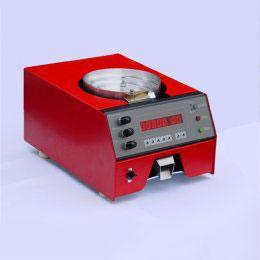
ELMOR
Switzerland
Seed counter, counter for small parts elmor C1 The elmor C1 is a universal counting machine for any small and irregularly shaped parts, such as: Finest plant seeds Vegetable seeds Cereals, Maize, Rice, Canola Insects, Pupae, Eggs Pharmaceuticals, pills, casules Gems, diamonds and precious stones Bulk semiconductor chips Small mechanical parts Implants All these products have in common is that they are either irregularly shaped, lightweigt or very small. Therefore these parts are difficult to handle manually. Dosing these parts with scales is often flawed or impossible. The seed counter C1 is specialized for exactly counting of such parts in small to medium quantities. Important applications of the C1 seed counter are the repetitive, precise counting of a preselected number of parts or the conventional determination of the 1000 grain weight according to ISO 520:2010. Parts with diameters from 0.2mm to about 18mm can all be processed with the same adjustable conveyor bowl. For fast counting of large amounts the 650 multi-channel counting machine can be used. The seed counter C1 is characterized by a robust construction, a fool-proof operation and a large, bright display that is easy to read even in daylight. The count signal is processed by a microprocessor which allows also the detection of parts with particularly difficult shapes. The parts counter C1 is equipped with terminals for remote control so that it can be combined, for example with packaging and filling machines. The C1 seed counter is the successor of our model 600, which was produced from 1980 for about 25 years. The new seed counter elmor C1 combines modern electronics with the proven key components that were already responsible in the previous model for long durability and unmatched accuracy. The C1 can be described with attributes such as longevity, durability, robustness and reliability – this for many years. Technical data Counter for small parts from 0.2 to 18 mm in diameter (*) Cylindrical parts can have a length of up to 20 mm (*) Only one adjustable conveyor bowl is used for the whole size range Conveyor bowl: anodised Aluminium, sorting element FS-0. Other bowls and sorting elements available on request Display and preset range of the counter: 0 to 99’999 Modes of operation: Preset counter, Totaliser The conveyor speed is reduced shortly before reaching the desired quantity to achieve a high dosing accuracy External connections allow the combination of the seed counter C1 with other devices, e.g. packaging machines. Typical performance data for spherical parts of 2mm diameter: Counting speed: about 50’000 parts per hour Counting error: 1/10’000 for clean, easy to separate parts Modes of operation: Totaliser Preset counter (*) other sizes on request The C1 counting machine is the central part of a system that can be adapted for many different applications. Some variants are standardized available, such as: Conveyor bowls for specific tasks Counter with dual product outlet Automatic seed weight sorter Filling carousel for bags and/or vials Filling adapter for containers Dust cover Ionizer Receipt printer Feeder / hopper with a few litres storage volume If your application can not be covered with these accessories, please contact us so that we can propose you a customized solution. elmor Green Design Our label for: high energy efficiency longevity no standby power loss most components may be recycled production without solvents, ROHS conformity
Request for a quote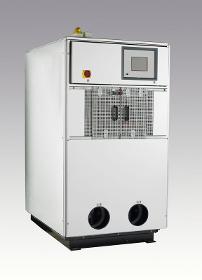
LAYTON TECHNOLOGIES
United Kingdom
Compact hermetically sealed low emission solvent degreaser for use with Trichloroethylene, Perchloroethylene, modified and aliphatic hydrocarbons. Designed to meet solvent emissions directive SED requirement. - Built-in solvent recycling by distillation and automatic carbon regeneration. - Great process flexibility with possibility to combine stages according to specific needs. - PLC controlled for process flexibility and ease of use. - Repeatable cleaning results. - Ultrasonic agitation and sprays for excellent cleaning results - Clean solvent and pure vapour are used for each cycle. - Quick and efficient vacuum drying, even on complex-shaped parts with blind holes. - Internal automated rocking and rotation of components. - Easy to maintain. - Compact-size, small footprint. - Short cycle times resulting in high productivity. - Solvent handling to facilitate the safe filling and draining of the process fluids. - Etc. ** Click for more **
Request for a quoteResults for
Recycled solvents - Import exportNumber of results
13 ProductsCompany type